What Are The Most Dangerous Animals in Texas
Answer to the question Dangerous Animals In Texas? Certainly, here’s an extended list of 20 dangerous animals found in Texas:
- Western Diamondback Rattlesnake
2. Black Bear
3. Mountain Lion
4. Alligators
5. Wild Hogs
6. Copperhead Snake
7. Brown Recluse Spider
9. Scorpions
10. Cottonmouth Snake
11. Texas Coral Snake
12. Bobcat
13. Red Imported Fire Ants
14. Coyotes
15. Venomous Centipedes
16. White-Tailed Deer (during rutting season)
17. Gray Wolf
18. Armadillos (due to leprosy risk)
19. Killer Bees (Africanized Honey Bees)
20. Bull Sharks (in coastal waters)
21. Black Widow Spider
Animals pose unique risks in including venomous bites and aggressive behaviors. For more information on specific animals, ask for details.
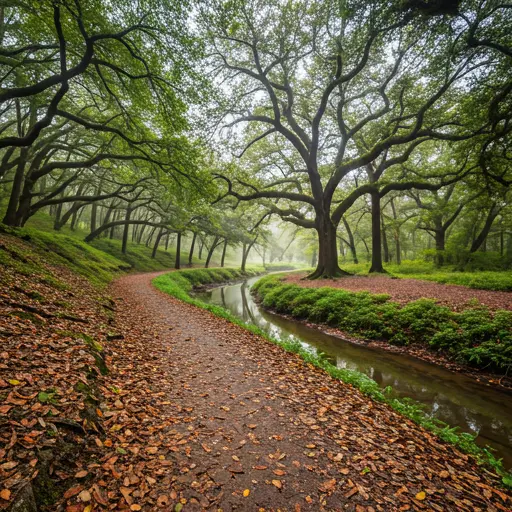
Introduction:
Texas’ landscapes are known for their rugged beauty and diverse wildlife. Texas is the largest state and boasts diverse landscapes which including grasslands, deserts, mountains, and the Gulf of Mexico shoreline. With 247,000 farms and a leading beef cattle producer. The Lone Star State is home to various creatures, including dangerous animals in Texas. This article reveals their behaviors and safety precautions for visitors to enjoy the vast landscapes and diverse wildlife.
What is the Most Deadliest Animal in Texas
The most dangerous animals in Texas which in very important for people to know about them are as follows:
Western Diamondback Rattlesnake:
The Western Diamondback Rattle snake is a notorious resident of Texas are known for its rattling sound and potential threats. This snake is the most deadly animal in Texas as their bites can severe tissue damage, internal bleeding, and death may occur if not treated promptly; exercise caution when hiking or working outdoors.

For its venomous bite and distinctive rattling sound, the Western Diamondback Rattlesnake is a prominent danger in Texas. Its bite can cause severe tissue damage, internal bleeding, and even death if not treated promptly.
Facts & Features Of Western Diamondback Rattle Snake:
- The Western Diamondback Rattlesnake, a venomous pit viper, calls Texas home.
- Sporting diamond-shaped patterns on its back, it’s recognized by the rattle at the end of its tail.
- This rattle serves as a warning when agitated.
- This snake’s venom contains toxins that can damage tissues and disrupt blood clotting, potentially causing serious health issues.
- Found in various habitats, its striking appearance and potent venom make it a formidable presence in Texas wildlife.
Note: To coexist with the Western Diamondback Rattlesnake in Texas, follow these safety guidelines to stay aware, give space, avoid provocation, wear appropriate clothing, stay on trails, know first aid, and educate others about rattlesnake presence. Be attentive while hiking, camping, or working outdoors, especially in rocky or grassy areas. If bitten, keep the affected limb immobilized and seek medical help immediately. Educate others about rattlesnake presence and respond if encountered. By respecting the Western Diamondback Rattlesnake’s space and understanding its behaviors, you can minimize the risks associated with encounters and coexist with this potentially dangerous creature.
Mountain Lion:
Mountain Lions are also known as cougars or pumas, are a top predator in Texas, preying on deer. They are stealthy and agile, but attacks on humans are rare. Be cautious and raise arms to make yourself appear larger.
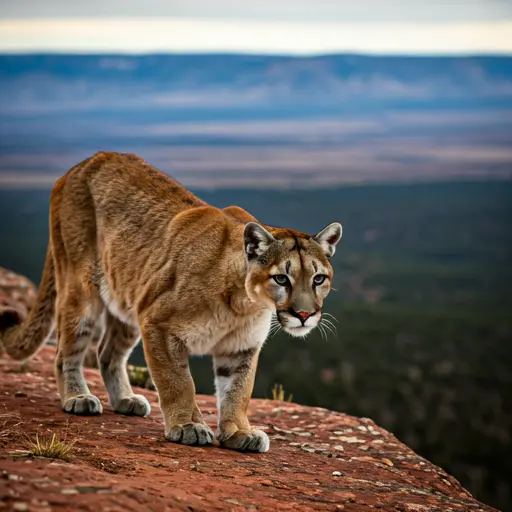
as a cougar or puma, the Mountain Lion is a top predator in Texas. While attacks on humans are rare, their stealth and agility make them potentially dangerous. Encounters require caution, especially in remote areas.
Facts & Features Of Mountain Lion:
- The Mountain Lion are also known as a cougar or puma, is a majestic predator found in Texas.
- Its tan coat and sleek physique allow it to blend seamlessly into its surroundings.
- With exceptional agility and stealth, it primarily preys on deer.
- While attacks on humans are rare, it’s essential to stay vigilant in remote areas and avoid running if you encounter one.
- The Mountain Lion’s presence adds an aura of wildness to Texas’ landscapes.
Note: To ensure the safety and well-being of Mountain Lions in Texas, maintain calm behavior, eye contact, noise, protect children and pets, stand your ground, and carry bear spray. These measures reduce confrontations and ensure the well-being of these majestic creatures. Carrying bear spray can also be a precautionary measure. By understanding these safety measures, you can reduce the likelihood of confrontations and ensure the well-being of these majestic creatures.
Black Bear:
Whereas Texas is not well-known for its bear population, the Black Bear is making a comeback. These strong creatures are omnivores which means they eat both plant matter and animals. Encounters with Black Bears are uncommon, but if you do come across one then you must respect their territory and avoid provoking them. To avoid attracting them, keep your campsite’s food and rubbish secure.
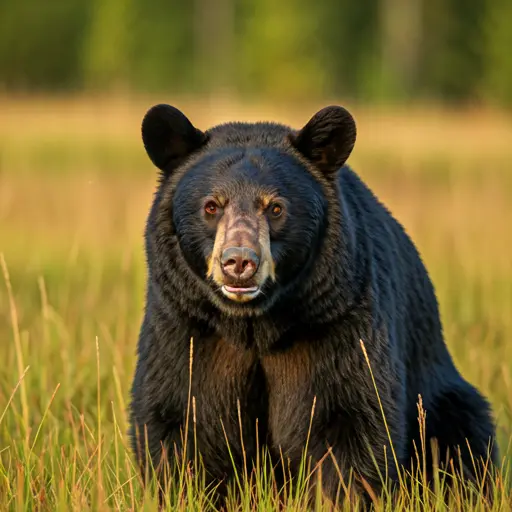
Though not as common as in other areas these Bears can pose a concern in Texas. While bears generally avoid humans and encounters with humans can become dangerous if the bear feels threatened or if food is involved. It is critical to keep campsites clean and to avoid close contact.
Facts & Features Of Black Bear:
- The Black Bear as a Texas native presents a striking contrast with its dark fur against the state’s diverse landscapes.
- While they typically avoid humans, their curious nature can lead them to approach campsites and residential areas in search of food.
- It is crucial to secure food and trash to prevent attracting them.
- If encountered, stand tall and avoid direct eye contact, allowing the bear to retreat.
- Coexisting with these powerful creatures means understanding their behavior and taking responsible precautions.
Note: To ensure safety when near Black Bears in Texas, follow these guidelines that to store food and trash in bear-proof containers or suspended from a tree, make noise while hiking, back away slowly, stand tall, avoid eye contact, never feed bears, group up, and report encounters to local authorities. These actions help prevent dangerous encounters and foster coexistence with these remarkable creatures. By following these guidelines, you can help prevent potential dangers and foster coexistence with these remarkable creatures.
Alligators:
Texas’ waterways are home to American Alligators within formidable reptiles that have been around for millions of years. Alligators can live up to 50 years in captivity, surpassing the eight-decade mark and reaching up to 80 years in captivity. Though they mainly feed on fish and small mammals, they can pose a threat to humans and pets near bodies of water. Always heed warning signs near alligator habitats, and maintain a safe distance when observing them.
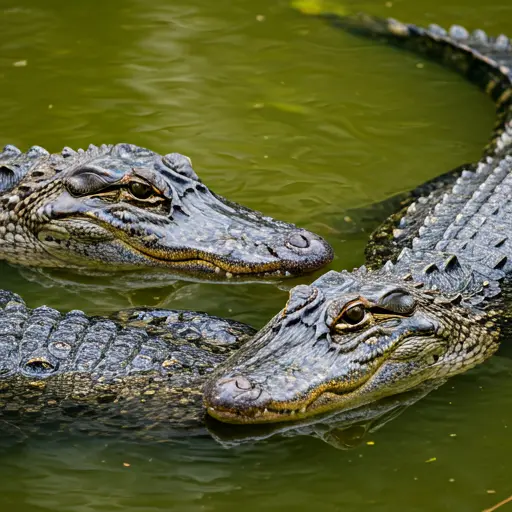
They can be dangerous to humans and pets. While they primarily prey on smaller animals as they can become aggressive if provoked or if their territory is invaded. Avoiding alligator habitats and maintaining a safe distance is crucial.
Facts & Features Of Alligators:
- Alligators are the ancient reptiles in Texas that epitomize prehistoric resilience with their scaly armor and robust bodies.
- Their distinctive snouts and powerful jaws make them apex predators in aquatic ecosystems.
- While primarily feeding on fish and smaller animals, caution is vital near their habitats, especially during mating season when they can become territorial.
- Their presence enriches Texas’ biodiversity, reminding us of the wild’s intricate balance.
Note: In Texas, it is important to prioritize safety when encountering alligators. Maintain a distance of 20-30 feet from them and avoid approaching, provoking, or feeding them. Respect warning signs near water habitats and avoid swimming or allowing pets near them. Be vigilant around water, especially during breeding season, and keep pets on a leash. Avoid feeding wildlife, as it can alter their natural behaviors and create hazards for both animals and humans. If you encounter an alligator exhibiting aggressive behavior or coming too close to human activity, report it to local authorities. By understanding alligators’ behavior and practicing responsible coexistence, you can appreciate these magnificent creatures while minimizing risks to yourself and others.
Copperhead Snake:
A venomous snake found in Texas, the Copperhead poses a dangerous animal due to its frequent presence in wooded areas and its camouflaged appearance. This animals is most likely to kill you in Texas as their bites can cause pain, swelling, and other complications. These animals vary in their risks and potential dangers, but understanding their behaviors and taking appropriate precautions can help Texans coexist with their wild neighbors safely.
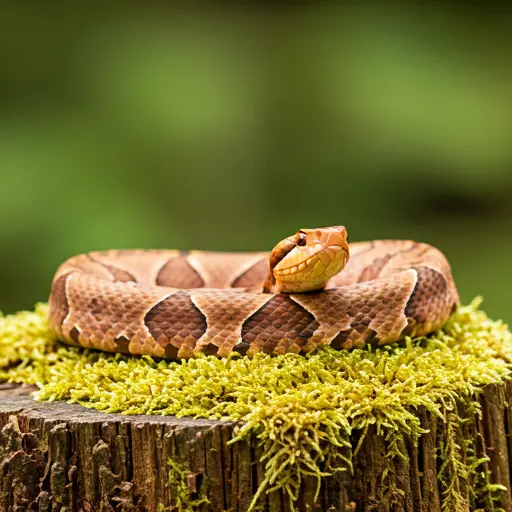
The Copperhead Snake are often found in Texas and features a distinct pattern of alternating light and dark bands that aids in its camouflage within its habitat. While its bite can cause local pain, swelling, and discomfort, it’s rarely life-threatening due to its mild venom potency. You can also know more about What are the deadliest animals in texas?
Facts & Features Of Copperhead Snake:
- The Copperhead Snake, a native Texan with a striking copper-colored head and hourglass-shaped bands, is often found in wooded areas and grasslands.
- Despite being venomous, Copperheads have milder venom, causing symptoms like pain, swelling, and nausea.
- Coexistence with these reptiles is ensured by being cautious and avoiding provocation.
Note: To avoid encountering a Copperhead Snake in Texas to follow these safety tips to stay alert and watch where you step, wear appropriate clothing, keep a safe distance for avoid handling or provoking the snake, and seek medical attention if bitten. These precautions help minimize the risk of encounters and promote a safer coexistence with Copperhead Snakes in Texas. Remember to stay calm, immobilize the affected area, and seek medical help immediately.
FAQs:
1 What is the most dangerous wild animal in Texas?
The most dangerous wild animal in Texas is the Western Diamondback Rattlesnake are known for its venomous bite and the potential health risks it poses to humans and pets.
2 What is the top predator in Texas?
The top predator in Texas is the Mountain Lion that also known as a cougar or puma with its stealth, agility, and ability to prey on deer making it a dominant force in the state’s ecosystems.
3 Does Texas have poisonous animals?
Yes, Texas is home to several poisonous animals including venomous snakes like the Western Diamondback Rattlesnake and Copperhead Snake, as well as venomous insects like the Brown Recluse Spider.
4 What is the biggest animal in Texas?
The biggest animal in Texas is the American Bison, also known as the buffalo, with mature bulls weighing up to 2,000 pounds and standing around 6 feet tall at the shoulder.
5 What animal is Texas known for?
Texas is known for its iconic animal the Longhorn cattle which symbolizes the state’s ranching heritage and resilience. Additionally, the state’s diverse landscapes also feature notable animals like the Armadillo and the White-tailed Deer.
